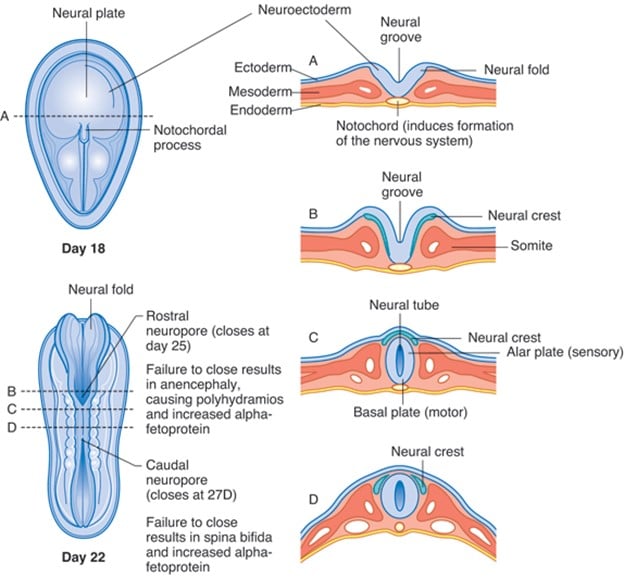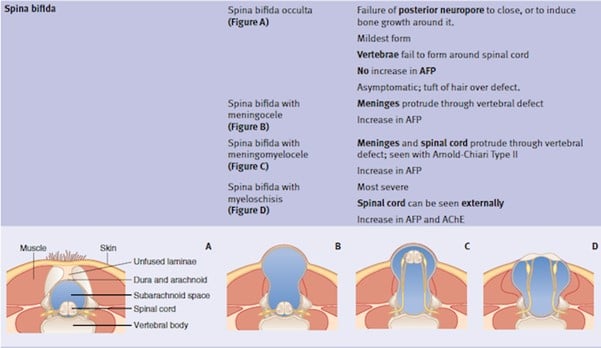If you’re preparing for the United States Medical Licensing Examination® (USMLE®) Step 1 exam, you might want to know which questions are most often missed by test-prep takers. Check out this example from Kaplan Medical, and read an expert explanation of the answer. Also check out all posts in this series.
The AMA and Kaplan have teamed up to support you in reaching your goal of passing the USMLE® or COMLEX-USA®. If you're looking for additional resources, Kaplan provides free access to tools for pre-clinical studies, including Kaplan’s Lecture Notes series, Integrated Vignettes, Shelf Prep and more.
This month’s stumper
A male newborn born at 37 weeks' gestation has a large mass over the lumbar region. Examination of the mass shows cerebrospinal fluid (CSF)-filled meningeal tissue that has herniated through a vertebral defect. The newborn is able to move all extremities and responds normally to external stimuli.
Which of the following is the most likely diagnosis?
A. Arnold-Chiari malformation type I.
B. Encephalocele.
C. Meningocele.
D. Meningomyelocele.
E. Spina bifida occulta.
The correct answer is C.
Kaplan Medical explains why
Normally, the closure of the neural tube occurs during the fourth week of development with the rostral neuropore closing at around the 25th day and the caudal neuropore closing at around the 27th day (see figure). If the tube fails to close properly, a neural tube defect will occur.
Failure of rostral neuropore closure results in anencephaly and failure of normal caudal neuropore closure results in spina bifida. Risk factors for neural tube defects include inadequate folate (inadequate intake or folic acid antagonists such as methotrexate), antiepileptic drugs (e.g., valproate, carbamazepine), and maternal diabetes.
Spina bifida with meningocele is a defect in the caudal portion of the neural tube in which the meninges protrude through a vertebral defect, but the spinal cord is normally positioned and usually functions normally.
Different forms of spina bifida are shown below.
Why the other answers are wrong
Choice A: Arnold-Chiari malformation type I is a downward displacement of the cerebellar tonsils such that they extend through the foramen magnum. It is not a defect in the closure of the neural tube. This is usually asymptomatic. It may be associated with syringomyelia but would not be associated with a CSF filled meningeal cyst.
Choice B: Encephalocele is a herniation of the brain through a bony defect in the skull caused by defective closure of the cranial vault overlying of the rostral end of the neural tube.
Choice D: Meningomyelocele is a neural tube defect, usually in the lumbar region in which the meninges and the spinal cord protrude through a vertebral defect. This neural tube defect is associated with neurologic deficits that are usually severe and are seen at the level of the defect. Neurologic function above and below the level of the defect is typically normal.
Choice E: Spina bifida occulta is the mildest of the neural tube defects, typically consisting of a small vertebral defect with normal spinal cord and meninges. In actuality, this is not a defect of the neural tube itself, but rather of the closure of the vertebral arch surrounding the neural tube. The defect is often associated with a skin dimple or tuft of hair that overlies the defect. There are no neurological deficits associated with this neural tube defect.
Tips to remember
In meningocele, only the meninges project through a defect in the vertebral column and form a sac-like structure filled with CSF.
For more prep questions on USMLE Steps 1, 2 and 3, view other posts in this series.





